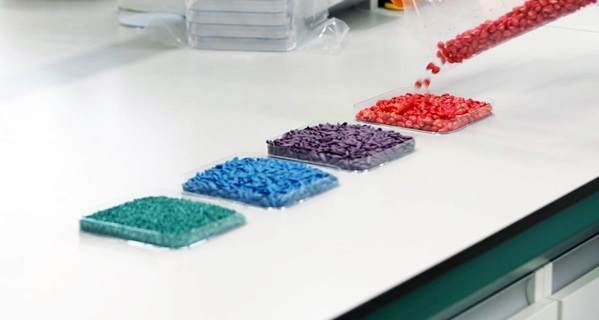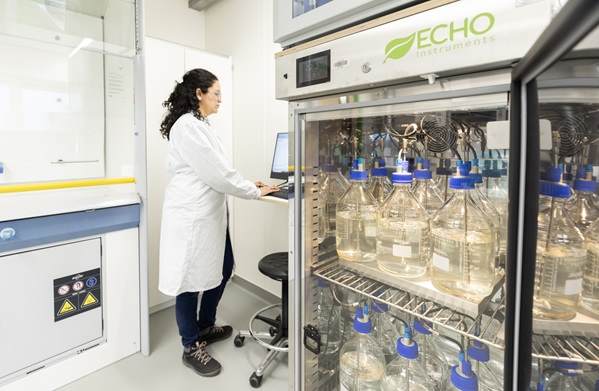Microplastics ban: ISF and seed industry position
The April 2024 edition of our Newsletter on microplastics sheds light on an official statement from the International Seed Federation (ISF) on microplastics and the seed industry. Alongside this, we look at 3 things you need to know about microplastics.
CONTENTS
- ISF's statement on microplastics
- Why is it important to start testing now?
- Are all natural polymers considered exempt?
- Is there a list of microplastic-containing polymers?

ISF's statement on microplastics
At the ISF World Seed Congress (May 27-29, 2024) in Rotterdam, Incotec’s Rob Pronk along with Rob Gaffney (BASF) and Bert Compaan (Bejo) took part in a panel discussion about the ISF’s statement on microplastics.
The statement was previously presented to the CG ESR (Environmental, and Social Responsibility) and showcased at the ASTA Flower & Veg Congress, where it was very well received. The ISF Board of Directors reviewed the document in São Paulo on March 14th and 15th, 2024 and approved its content. Subsequently, it was shared widely within a diverse range of stakeholders to ensure broad visibility.
The recorded panel discussion covered an array of topics including:
• What does new legislation in Europe mean for the seed industry?
• What is the seed industry’s position on the ban on microplastics?
• How does this affect other regions of the world?
• Why is the 2028 deadline challenging?
• What steps can seed industry players take today?
Watch the panel discussion recording
Read the ISF’s statement on microplastics in seed treatment
3 things you need to know about microplastics
1. Why is it important to start testing now?
The restriction on intentionally added microplastics was adopted in Autumn 2023, leaving seed treatment companies with a 5-year transition period to adjust their portfolio, before the final ban on sale of these materials will be adopted. Although 5 years may seem like a long period, it is essential to start testing products which are already available now. Staying ahead of regulatory changes is not just a wise move; it is essential for business continuity and success, and proactive testing well in advance of regulatory shifts can be a game-changer.
Testing products well in advance allows companies to identify potential issues or bottlenecks early on. Addressing these concerns ahead of time mitigates the risk of production delays, shortages, or interruptions in product availability. By assessing products against upcoming standards, companies can identify areas for improvement in terms of safety, efficacy, or performance. This proactive approach enhances product quality and additional improvements can be made to the final product.
A thorough testing process requires time and diligence. At least two years, encompassing different seasons and conditions, ensures comprehensive evaluation and validation of products. Testing over multiple seasons allows for the identification of seasonal variations in performance, ensuring that products remain effective and compliant year-round.

Finally, it is crucial not to stall when it comes to testing. Procrastination can lead to missed opportunities, increased risks and last-minute scrambles to meet regulatory deadlines. By initiating testing efforts promptly and maintaining a steady pace throughout the process, companies can position themselves for long-term success.
In conclusion, the importance of testing products well ahead of regulatory changes cannot be overstated. By taking a proactive approach to compliance, companies can ensure regulatory adherence, avoid disruptions, enhance product quality, realize cost savings and gain a competitive edge.
2. Are all natural polymers considered exempt?
Yes, but only if they are unmodified. But the moment you start with even the simplest chemical modification, then it might not stay microplastic free. Natural polymers are generally considered more environmentally friendly compared to synthetic polymers, yet they may still contribute to microplastic pollution under certain conditions. Natural polymers used in commercial applications may contain additives, processing aids or impurities that could hinder biodegradation or contribute to microplastic pollution. It is therefore very important to add that it is only in their unmodified nature that natural polymers can be considered microplastic free.

3. Is there a list with microplastic-containing polymers?
There are few examples of polymers used in commercial applications that could be considered microplastics. Those are non-biodegradable and have a natural tendency to fragment into smaller particles over time. Here are some that could raise concerns:
- Polystyrene (PS): polystyrenes like other synthetic polymers, have the potential to contribute to microplastic pollution if they are not designed to biodegrade or if they fragment into smaller particles over time. Polystyrene itself is known to be a persistent pollutant in the environment due to its resistance to degradation. However, copolymers are often designed with specific properties that can alter their degradation behaviour.
- Polyethylene (PE): conventional polyethylene is non-biodegradable and can persist in the environment for a long time, breaking down into smaller particles over time.
- Polyvinyl alcohol (PVA): while PVA is water-soluble and biodegradable under certain conditions, some formulations may contain additives or cross-linking agents that could impede its degradation. If PVA coatings are not designed to degrade rapidly, they could potentially contribute to microplastic pollution.
- Polyacrylic acid (PAA): PAA itself is not typically considered a significant source of microplastic pollution, as it can degrade in the environment under certain conditions. However, if PAA is used in combination with other non-biodegradable polymers or additives that hinder its degradation, it could contribute to microplastic pollution indirectly.
In summary, among the polymers commonly used in seed coatings, non-biodegradable polymers and formulations containing synthetic additives or cross-linking agents that hinder biodegradation could potentially contribute to microplastic concern. It is essential to consider all the elements when designing a film coating or formulation and its environmental fate.

La Commission européenne adopte une restriction sur les microplastiques
